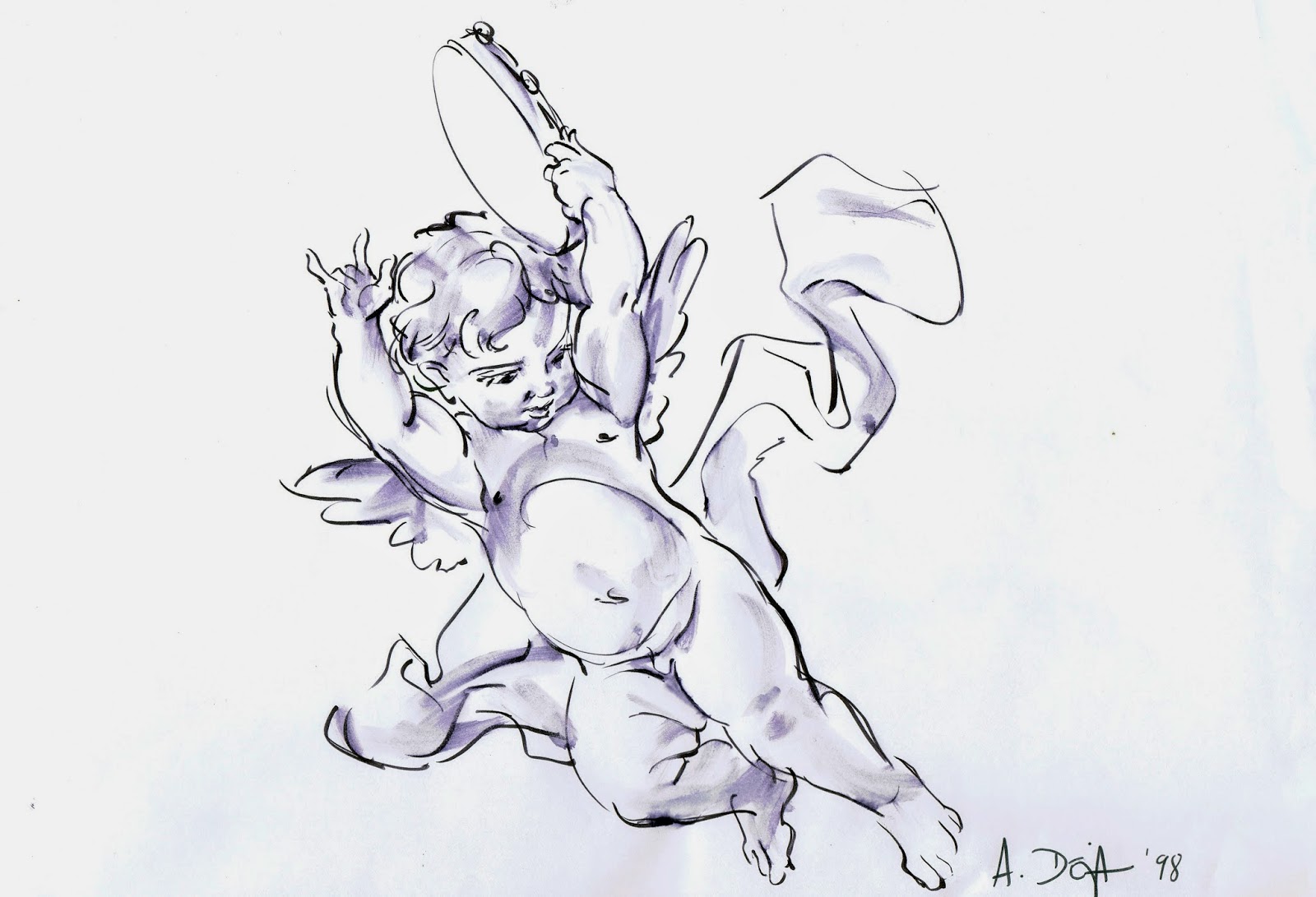Years ago I became fascinated with painters and sculptures from the Baroque and Rococo period.
In those times the human figure was depicted in dynamic poses, and in motion.
Francois Boucher (1703 - 1770) was one of the artists whose work I started to take a closer look at.
Here’s what Wikipedia says about him:
Boucher was a French painter in the Rococo Style. He is known for his idyllic and voluptuous paintings on classical themes, decorative allegories, and pastoral scenes. He was perhaps the most decorative artist of the 18th century.
I just enjoyed analyzing his lively compositions of mostly women and cupids. And I think I learned a little about how to twist parts of the human body to avoid rigid poses, and to make figures look alive.
The sketch above of a cupid is a detail study from this painting, called The Muse Euterpe.
I have a coffee table book on Boucher’s art and life, and going through the pages I tried to imagine what a sketch might have looked like in preparation for certain paintings. So I decided to use his “Birth of Venus” to work backwards, and create a drawn study based on the image.
To start out I bought two oversized thick, white watercolor panels and decided to age them. I took them outside and poured coffee and tea on them, then I beat them up a little with garden tools.
It was fun to see how the white paper turned brown, with strains all over it. I think it’s what you call antiquing.
Then I sketched the composition with brown charcoal, before adding dark and light washes to give the figures some form. In the end I touched up a few lines with a brown brush pen.
Here’s what I came up with, a Boucher broken in two. Each panel is 5' x 3', 4"
The actual painting.






I'm currently fascinated by Sir Lawrence Alma-Tadema and doing value studies of his paintings, learning so much. Thank you for sharing
ReplyDeleteVery very interesting to see a beautiful painting like that worked backwards. I must say though, there is a simplicity and roughness in your version that I find very appealing.
ReplyDeleteAmazing! Thank you for sharing your technique description, that was very interesting.
ReplyDeleteThis comment has been removed by the author.
ReplyDeleteI love your work intensely. You draw beautifully and your understanding of movement is breath-taking! I have been doing alot of work set in 19th Century where oddly movement in paintings seems more restricted. I find the moleskin has a fairly antique look anyway, so I avoid the tea and coffee, but I think this approach is essential for all animators. I have gone one step further and then tried to animate some of the scenes - richard williams famously did the mona lisa on at least two occasions for adverts, but these paintings from the renaissance are so well drawn that it is quite easy to articulate the figures and there is always something to learn. I have also, incidentally, taken the poses and animated more grotesque caricatures of these pictures on the principle that drawing and movement are fairly distinct concepts. Again, there is always something worth learning.
ReplyDeleteThis is what I like about you Mr. Deja:
ReplyDeleteyou always remained true to the classic Disney style, and you never forgot the old European masters and their fantastic heritage.
I personally like your ink and wash copies about classic statues and paintings! Bravo maestro!
awesome arts
ReplyDeleteLove it!
ReplyDeleteIncredible how you could take the style and the antique effect you did.
ReplyDeleteVery inspiring. I think I am going to study these painter too.
Ich habe ein Faible für Cupids, daher danke fürs Teilen! 😊
ReplyDelete